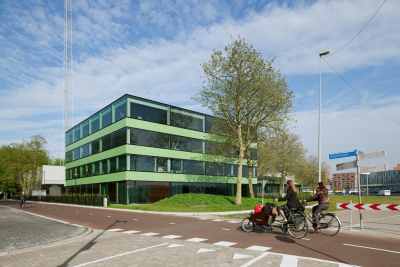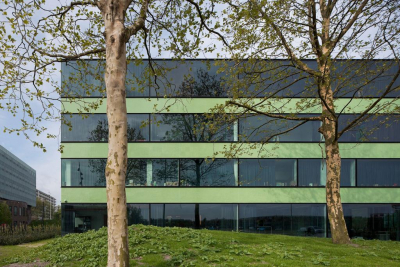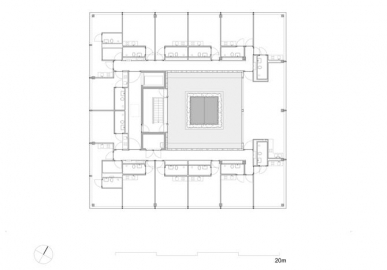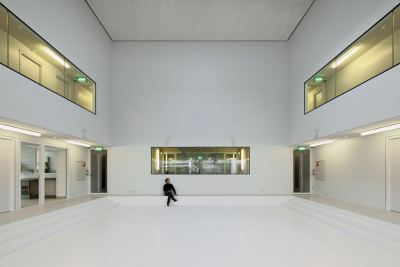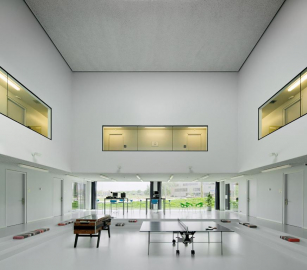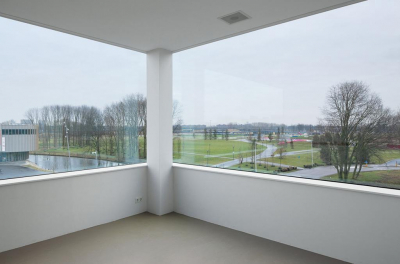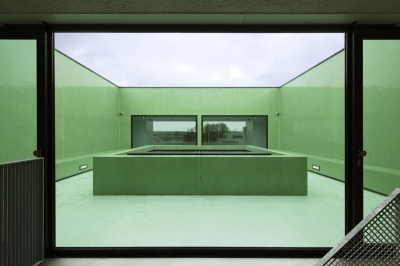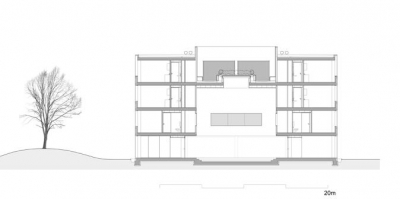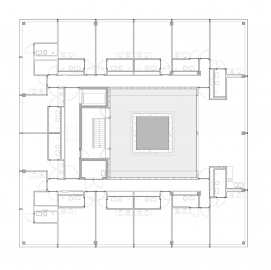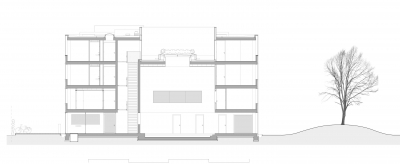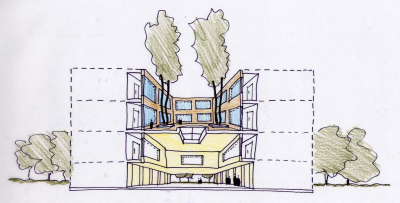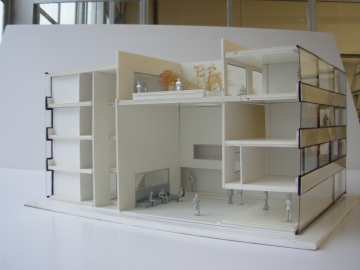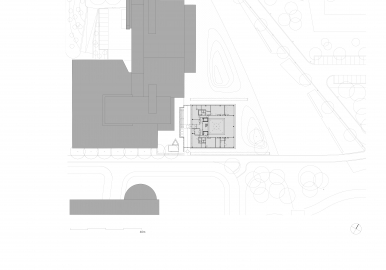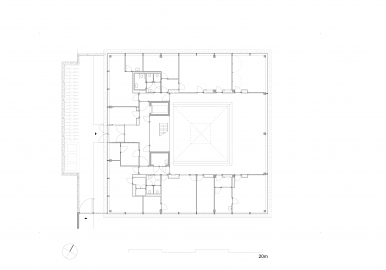Drug Addicts Hotel
Residential Project for Heroin Addicts
In 2007, within the framework of a negotiation procedure, Atelier Kempe Thill received the commission to plan a residential hotel for heroin addicts located at a sensitive transition between the square and the park. The task here was extremely delicate since such facilities are very unpopular with the population and normally have a miserable existence in container structures on the urban periphery in industrial or railway wastelands, almost never realized as a new building in the direct vicinity of central, public institutions and parks. For the architects, this posed an interesting question: How should the typology of the Drug Addicts Hotel be manifested within the urban context?
The building (2128 m2 gross floor area) is organized along the property boundaries (730 m2), which results in a programmatic ring in terms of layout, measuring twenty-five meters square. Within the ring, a vacuum for which there is no programmatic counterpart is created and interpreted as an atrium. On the ground floor, there is a large, central common room that opens up over three stories and is realized within the structure as a cube measuring nine meters on each side. Above the atrium is a roof terrace, which is designed as an intimate and introverted courtyard. In it, the residents can withdraw and relax away from the public space.
The structure is truly neutral in function and is executed as a frame construction, with non-load-bearing interior walls and all the technical installations also integrated into the building independently of the load-
bearing structure. As a result of these measures, the structure can be adapted to new uses relatively quickly and without great expense.
At first glance, the exterior of the building is defined by horizontal, rather neutral bands of windows with solar-control glazing. Very generous fixed glazing with lengths of 2.6 4, and 6 meters are installed. The glass is clamped in very slim, extruded, black-anodized aluminum profiles, which were developed specifically for this project.
The horizontal balustrades that run between the windows are executed with small, reflective glass mosaic tiles, which emphasize the slickness and hermetic quality of the facade and bring in a refined and tactile quality.
The building is executed as a frame construction, with non-load-bearing interior walls and all the technical installations also integrated into the building independently of the load-bearing structure. As a result of these measures, the structure can be adapted to new uses relatively quickly and without great expense.
Due to its compactness and its use, it is important that a considerable amount of natural daylight is available within the building. The façade was therefore generously glazed and allows significant light to penetrate the interior. The central atrium is illuminated by a skylight

